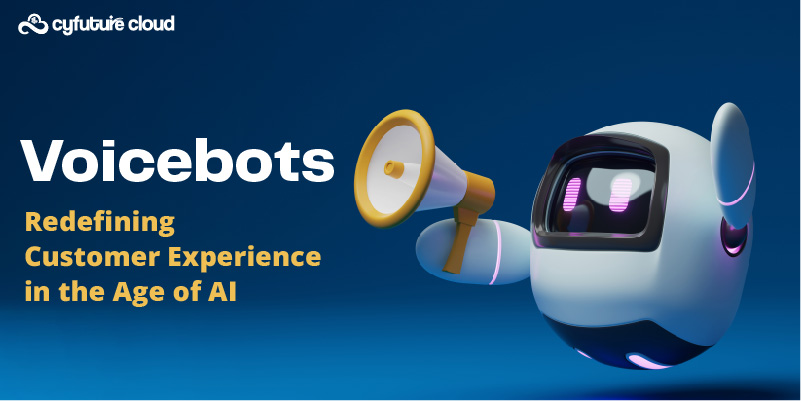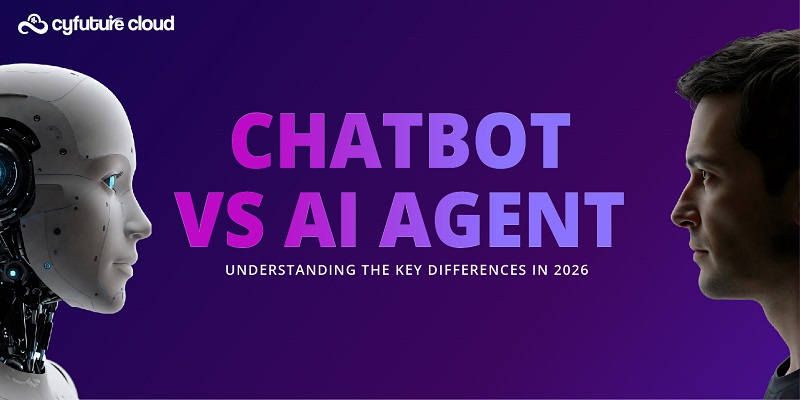Table of Contents
In the data-driven world, as organizations struggle with the increasing size of their data storage, management, and processing, many have turned to modern data technologies.
This advanced data technology is changing how progressive companies operate by following the concept of “data lakes.”
Data lakes are vast stores of data that can be used for a variety of purposes, including data warehousing, analytics, and machine learning.
In this blog, you’ll get to know what data lakes are, how we integrate data lakes with advanced technologies and the future of data lakes.
Data Lake: Introduction
By providing organizations with a centralized repository for storing and managing large volumes of raw, unstructured data at low cost, data lakes have become an essential part of modern data architecture.
To understand it better, let’s dive into this blog.
What is a Data lake?
A data lake is a central location that allows organizations to hold or store a large amount of data in its structured and unstructured form at any scale. The data stored in a data lake can be gathered from a variety of sources, including IoT devices, social media, log files, and more.
In comparison to a hierarchical data warehouse, which stores data in files or folders, a data lake uses a flat architecture and object storage to store the data.
In recent years, data lakes have become increasingly popular as they enable organizations to store large amounts of data cost-effectively and easily make it available for analysis.
As organizations collect more data, the need for advanced analytics and machine learning (AI/ML) has grown significantly. AI and ML allow organizations to extract insights and make predictions from the data stored in a data lake, which can be used to drive business decisions and improve operations.
Why would you use a data lake?
As data lakes are open format, users can avoid being locked into a proprietary system like a data warehouse. This has become increasingly important in modern data architectures.
Data lakes are also highly durable and low-cost, due to their ability to scale and leverage object storage. Additionally, enterprises today see advanced analytics and machine learning on unstructured data as strategic priorities.
The ability to ingest data in a variety of formats, including raw data, structured data, unstructured data, and semi-structured data, is a key advantage of data lakes. Data lakes also offer other benefits, making them the clear choice for data storage.
There are several reasons why an organization might choose to use a data lake:
Data Centralization
To make data easier to access, process, and analyze, a data lake allows organizations to store all of their data in one centralized location.
Real-time Analytics
Data lakes can support real-time analytics and near-real-time data processing. It allows organizations to swiftly and conveniently process streaming data, and make real-time decisions based on that data.
Cost Savings
Organizations get help from Data lakes in terms of saving money on data storage and processing. Data lakes allow raw data storage in its native format, without the need for expensive data modeling and pre-processing.
Flexibility
Data lakes are designed to be highly flexible and scalable. It allows organizations to easily ingest and store large volumes of data in various formats and types.
Better insights
Having a data lake enables organizations to perform advanced analytics which includes Machine Learning and Artificial Intelligence on their data so that they can gain deeper insights from it, which in turn can be used for strategic decision-making.
Governance
To ensure compliance and security, data lakes allow for easy cataloging, classification, and tagging of data, and implement data governance policies.
Versatility
A data lake can hold structured, semi-structured, or unstructured data, enabling organizations to store different types of data from different sources and in different formats, it also enables the organization to use data with a variety of technologies like SQL, Spark, and many more.
Data Lake for Machine Learning:
A data lake for machine learning serves as a reservoir of diverse and extensive raw data, encompassing structured, semi-structured, and unstructured data, fostering the development and training of machine learning models. It allows seamless ingestion, storage, and accessibility of data, facilitating data preprocessing, feature engineering, and model training, empowering data scientists and AI engineers to leverage abundant, unrefined data to create more accurate, sophisticated machine learning algorithms and predictive models.
Features and Components of an Integrated Data Lake:
| Component | Description |
|---|---|
| Data Sources | Diverse sources including IoT devices, databases, applications, logs, and more, enabling the ingestion of structured, semi-structured, and unstructured data into the lake. |
| Storage Infrastructure | Scalable and flexible cloud-based storage system accommodating massive volumes of raw data while maintaining its native format, ensuring cost-effective and efficient storage. |
| Data Ingestion | Streamlined mechanisms for ingesting and processing data from various sources, employing tools that facilitate seamless ingestion, transformation, and storage in the data lake. |
| Data Catalog | Centralized repository containing metadata, facilitating easy discovery, understanding, and management of available data assets within the integrated data lake environment. |
| Data Governance | Frameworks and policies ensuring data quality, security, compliance, and access control, adhering to regulations and standards while maintaining data integrity and consistency. |
| Processing & Analytics | Support for diverse analytics tools, frameworks, and processing engines to perform exploratory analysis, machine learning, AI modeling, and other data-driven decision-making tasks. |
| Integration Capabilities | Ability to integrate with various systems, applications, and analytical tools, enabling seamless interaction and data exchange, fostering collaboration and interoperability. |
| Security Measures | Robust security protocols such as encryption, access controls, authentication mechanisms, and monitoring, ensuring data protection and privacy across the entire data lake ecosystem. |
How data lakes are integrated with AI/ML?
The need for data management solutions efficiently and effectively becomes more important than ever, as the volume of data continuously grows at an unprecedented rate.
The only area where data lakes are specifically well-suited is the integration with Artificial Intelligence (AI) and machine learning (ML).
To unlock the full potential of their data by providing a robust infrastructure for storing, processing, and analyzing large datasets organizations allow Ai and ML for the integration of data lakes.
With a data lake, organizations can easily store and manage large volumes of data in its raw format, without the need for expensive data modeling and pre-processing. This allows data scientists and ML engineers to quickly and easily access the data they need for their models, without the need for a complex data pipeline.
Integrating data lakes with AI/ML is a multi-step process that involves several key components:
Data Ingestion
An initial step in the integration of data lakes with AI/ML is to bring data from different sources into the data lake. This can include:
- structured data from relational databases
- semi-structured data from log files
- unstructured data from social media
- IoT devices.
Apache Nifi, Apache Kafka, and stream-processing frameworks like Apache Storm, Apache Flink etc, are the various technologies that can be used to collect and transfer data into the data lake.
These technologies are designed to handle high-volume, high-velocity, and high-variety data streams, making them well-suited for data lake environments.
Ingestion tools can also support data processing such as filtering, routing, and transformation as data is being ingested, which decreases the amount of data that needs to be stored in the data lake, which in turn reduces the costs associated with data storage.
Data Preparation
Once the first step of ingesting the data into the data lake is completed, it needs to be cleaned, integrated, and prepared for analysis. For this purpose, the tasks include such as data cleansing, data integration, feature engineering, and data transformation.
Data preparation can be a time-consuming and labor-intensive process, but it is essential for ensuring that the data is of high quality and ready for analysis. Tools such as Apache Hive, Apache Pig, and Apache Spark SQL can be used to perform data preparation tasks in a data lake. These tools provide a SQL-like interface for querying and manipulating data, making it easy for data analysts to perform data preparation tasks.
Data Processing
After the preparation of the data, it can be processed and analyzed using big data technologies such as Apache Hadoop, Apache Spark, and Apache Flink.
These technologies are used for the parallel processing of large amounts of data, which is crucial when working with data lakes that contain terabytes or petabytes of data.
They provide a range of built-in libraries for common data processing tasks such as filtering, sorting, and aggregating data, as well as support for machine learning and graph processing. By using these tools, organizations can process and analyze data in near real-time, which allows them to quickly make data-driven decisions.
Data Analysis
The processed data can then be analyzed using AI/ML algorithms. These algorithms can be used to extract insights, make predictions, and identify patterns in the data.
Popular AI/ML platforms such as TensorFlow, PyTorch, sci-kit-learn, R, etc. can be integrated with data lakes, as well as cloud-based platforms like Amazon SageMaker, Google AI Platform, and Microsoft Azure Machine Learning.
These platforms provide pre-built models, libraries, and frameworks for a wide range of AI/ML tasks, including image and video recognition, natural language processing, and predictive modeling. By integrating data lakes with AI/ML platforms, organizations can gain a deeper understanding of their data and make more informed decisions.
Data Visualization
The final step is to visualize the results of the data analysis, which can be used to make data-driven decisions. Data visualization tools such as Tableau, Looker and Power BI can be integrated with data lakes to create interactive dashboards and reports.
These tools provide a range of visualization options, such as charts, tables, and maps, which can be used to represent data in a way that is easy to understand.
Security
Security is a key concern when it comes to data lake integration with AI/ML. It is crucial to implement a robust security infrastructure that includes access controls, data encryption, and threat detection to protect sensitive data from unauthorized access.
Thus, integrating data lakes with AI/ML is a complicated process that needs a combination of big data technologies, data preparation tools, AI/ML platforms, and data visualization tools.
It is important to have the right infrastructure, tools, and team in place to handle the volume of data that is being collected and to ensure that the data is properly prepared and cleaned before it is analyzed.
The Future
There are many organizations that have turned this approach into a reality – Google, Amazon, and Facebook are some of the most notable examples.
- Google: creating new insights from customer behavior data
- Amazon: powering its e-commerce website with real-time data analytics
- Facebook: improving the accuracy of advertising by understanding user interests at a granular level.
The data lake created a value chain for each company which resulted in new types of business value, such as
- Using data lakes for web data can help improve the speed and quality of web searches.
- Data lakes are an effective way of handling clickstream data, which in turn can support more effective methods of web advertising.
- The data lake provided a more complete view of customer interactions and behaviors by cross-channel analysis.
- A data lake is a body of water that stores all types of data in its raw, unrefined form. This includes log files, streaming audio and video, text files, and social media content. The benefit of having a data lake is that retailers can gain profitable insights from the data to quickly identify real-time consumer behavior and convert actions into sales.
- Data lakes provide a unique opportunity for companies to improve their R&D performance. By allowing access to data assets that would otherwise be difficult to obtain, data lakes give researchers the ability to make more informed decisions and improve the accuracy of their predictions.
In addition, data lakes can help companies save time and money by reducing the need for expensive data-gathering infrastructure.
- Data lakes can be extremely beneficial for companies who want to be able to run analytics and ML algorithms on data generated from a variety of sources. A data lake centralizes all of this data in one place, making it much easier to work with. For example, a biotechnology company could use a data lake to receive manufacturing data, research data, customer support data, and public data sets. This would then provide real-time visibility into the research process for various user communities via different user interfaces.
Take a moment to think about the future and where we’re headed. We’re striving to connect enterprise data so that businesses can run entirely on digital information. This shift will put immense pressure on data accessibility and the speed of development and deployment. The data lake is the solution to those demands.
According to Businesswire, In 2019, the global data lake market was valued at $7.9 billion and by 2024, it’s projected to grow to $20.1 billion at a compound annual growth rate (CAGR) of 20.6 percent.
In conclusion,
The future of data lakes and AI and ML are intimately linked to each other. As organizations continue to generate and collect more data, the need for efficient and effective data management solutions will only continue to grow.
Data lakes provide a powerful infrastructure for storing, processing, and analyzing large volumes of data, and their integration with AI and ML will enable organizations to unlock the full potential of their data and make more informed decisions.
So why wait? To maximize the potential of your data, reach out to Cyfuture Cloud and get all the benefits of Data lakes.
Recent Post
Send this to a friend

 Server
Colocation
Server
Colocation CDN
Network
CDN
Network Linux
Cloud Hosting
Linux
Cloud Hosting Kubernetes
Kubernetes Pricing
Calculator
Pricing
Calculator
 Power
Power
 Utilities
Utilities VMware
Private Cloud
VMware
Private Cloud VMware
on AWS
VMware
on AWS VMware
on Azure
VMware
on Azure Service
Level Agreement
Service
Level Agreement 



















